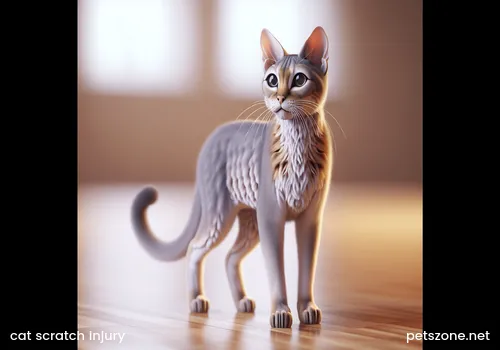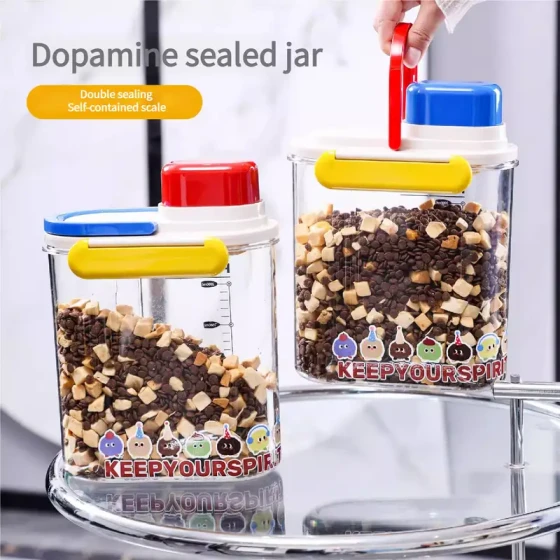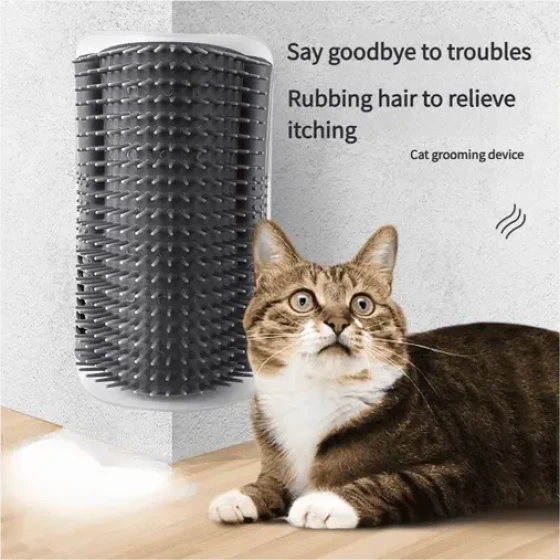Death after being scratched by a cat_Analysis of causes of death 13 days after cat scratch
Death 13 days after being scratched by a cat sounds indeed alarming, but normally this is not a common consequence of a cat scratch. However, if the wound is improperly treated or timely recognition and intervention fail, tragedy may result from rabies, severe bacterial infections (such as sepsis), or rare severe complications of cat scratch disease. Among them, rabies is the deadliest and incurable disease, with an incubation period varying greatly from a few days to several years. Therefore, "death 13 days later" is one of the possible manifestations, but not the only cause.

When unfortunately scratched by a cat, especially a stray or unvaccinated cat, we often immediately think of rabies. But besides rabies, there are other potential risks which, although not as "notorious" as rabies, must not be taken lightly. Understanding these potentially fatal risks and how to properly treat the wound is key to protecting ourselves and our families' health.
1. Potential "Culprits" Behind Death after Cat Scratch
Death occurring within 13 days after a cat scratch may be caused by several high-risk factors, which are:
1. Rabies: The hidden "killer"
Rabies is an acute infectious disease caused by the rabies virus, mainly attacking the central nervous system. Once symptoms appear, it is almost 100% fatal and regarded as an "incurable disease." Cats, especially strays or unvaccinated pet cats, can be carriers and transmitters of the rabies virus.
- Incubation period: The incubation period of rabies varies from several days to years. Most cases develop symptoms within 1-3 months, but periods as short as one week or as long as several years exist. According to WHO reports, 90% of cases have contact with animals within 3 months before symptom onset. Therefore, developing symptoms and death 13 days after a cat scratch, although relatively short, is possible. It is like a time bomb with an uncertain detonation time, but once triggered, consequences are unimaginable.
- Transmission route: Mainly transmitted through bites or scratches from infected animals; the virus enters the body through the wound. If a cat licks its paws before scratching a person, transmission is also possible.
- Symptoms: Early symptoms may include fever, fatigue, headache, nausea similar to a cold. The scratch site may feel abnormal, such as pain, numbness, or itching. As the disease progresses, neurological symptoms like hydrophobia, aerophobia, throat spasms, difficulty breathing, agitation, and mania appear, eventually leading to death from respiratory or circulatory failure.
2. Severe bacterial infection: A complication not to be underestimated
Cats’ mouths and claws carry a large number of bacteria. Once the skin is scratched, these bacteria can invade and cause infection. Deep wounds, heavy contamination, or individuals with low immunity have significantly increased risk and severity of bacterial infection.
- Common pathogens: The most common bacteria include Pasteurella multocida, Staphylococcus, and Streptococcus. Pasteurella infections can cause rapidly progressing cellulitis appearing within 24-48 hours with redness, swelling, heat, pain, and possibly pus formation.
- Fatal risks: If local bacterial infection is not promptly and effectively controlled, bacteria may enter the bloodstream causing sepsis. Sepsis is a systemic inflammatory response syndrome that progresses rapidly, potentially leading to multiple organ dysfunction syndrome (MODS), septic shock, and eventual death. If death occurs 13 days after a cat scratch and rabies is excluded, sepsis is a critical consideration. It is like "a thousand-mile dam broken by an ant nest" — a small wound, if untreated, can trigger systemic "big trouble."
- Tetanus: If the wound is deep and contaminated by soil, feces, or other materials, there is also a risk of tetanus infection. Clostridium tetani grows in anaerobic conditions and produces neurotoxins causing muscle stiffness and spasms. Serious cases may lead to spasms of respiratory muscles and suffocation. Although newborns now receive vaccines, adults may still require booster shots.
3. Cat Scratch Disease (CSD): A rare but deadly "accident"
Cat scratch disease is a bacterial illness caused by Bartonella henselae, mainly transmitted through cat scratches or bites.
- Main symptoms: Typical CSD often presents with red papules or pustules at the scratch site, followed by swollen and painful nearby lymph nodes, possibly accompanied by low-grade fever and fatigue. Prognosis is usually good.
- Rare complications: However, in very rare cases, especially in immunocompromised individuals (such as AIDS patients or those undergoing chemotherapy), Bartonella henselae may spread systemically causing severe complications like meningitis, encephalitis, granulomas in liver and spleen, endocarditis, etc. Although rare, these complications can lead to death in specific conditions. For cases of death 13 days post-cat scratch where common fatal causes are ruled out, severe systemic infection from cat scratch disease should also be considered, despite its extremely low fatality rate.
2. How to Assess the Risk Level of a Cat Scratch?
Not all cat scratches pose the same danger. We can simply evaluate risk levels based on the following aspects:
- Wound depth: Superficial scratches have lower risk; wounds with bleeding, skin breakage, or deep into muscle increase risk significantly.
- Source of cat: Stray cats, feral cats, or cats with unknown health status carry higher risk than regularly vaccinated pet cats.
- Cat’s behavior: If the cat shows abnormal behavior after scratching (such as agitation, aggression, excessive salivation), the risk is very high.
- Own immunity: Immunocompromised individuals should be more cautious even with minor wounds.
3. After Being Scratched by a Cat: The Golden "Self-rescue 24 hours" and Follow-up Treatment
Regardless of wound size or depth, emergency self-rescue and timely medical care after a cat scratch are critical.
1. Emergency wound care: Time is lifeline
- Irrigation: This is the first and most important step! Immediately rinse the wound thoroughly with soap water (or any cleaning detergent) and running water alternately for at least 15 minutes. Like "Yu the Great controlling the flood," let the water wash away as much virus and bacteria as possible.
- Disinfection: After rinsing, disinfect the wound with povidone-iodine, alcohol, or other disinfectants. Remember, not just swabbing with a cotton swab but fully covering the wound with disinfectant.
- Hemostasis: If bleeding occurs, apply clean gauze or cloth to press and stop bleeding.
2. Timely medical consultation: Professional assessment and intervention
After emergency care, immediately go to a hospital or disease control center for professional help.
-
Rabies vaccine and immunoglobulin: For exposures with rabies risk, doctors assess the wound condition (e.g., bleeding, number of wounds) and exposure category (typically classified into three levels internationally) to decide on rabies vaccination and/or administration of rabies immunoglobulin.
- Rabies vaccine: Provides passive immunity helping the body produce antibodies to prevent rabies onset. The full course usually follows the "five-injection" or "four-injection" regimen on days 0, 3, 7, 14, and 28 (or 0, 7, 21 days plus day 28 booster). Although somewhat expensive, generally a few hundred RMB, it is negligible compared to life.
- Rabies immunoglobulin: Contains ready-made antibodies giving immediate protection, especially injected around the wound to neutralize early invading virus. Essential within 24 hours post-exposure, particularly for severe exposures such as bites, deep wounds, or multiple exposures.
-
Tetanus vaccine: If the wound is deep and contaminated, doctors evaluate tetanus vaccination or tetanus toxoid administration to prevent tetanus.
- Antibiotic treatment: For wounds with infection risk, doctors may prescribe oral or injectable antibiotics to prevent or treat bacterial infection.
- Wound management: Doctors will further clean the wound and decide if suturing is needed. Generally, wounds caused by animal bites or scratches are not recommended for immediate suturing, as this may trap bacteria inside and worsen infection. The decision depends on individual cases.
4. Prevention: How to Avoid the Risks of Cat Scratches?
"Prevention is always the best strategy."
- Regular vaccination for pet cats: Ensure timely rabies and other routine vaccinations for home cats, and regular health checks. This protects not only the cats but also the family.
- Keep distance from unknown cats: Especially stray and feral cats. Do not provoke, feed, or pick them up casually. Avoid disturbing cats that are eating or frightened, as they may scratch or bite defensively.
- Educate children: Teach kids how to safely interact with animals and avoid close contact with unknown animals.
- Personal protection: Wear gloves or other protective gear when handling stray animals if necessary.
Frequently Asked Questions
Q1: If scratched by a pet cat that is vaccinated, is rabies vaccination still necessary?
A1: If the pet cat receives annual rabies vaccination and was healthy at the time of the scratch, rabies risk is generally very low. Still, thorough wound cleaning and disinfection are recommended along with a 10-day observation of the cat's health (the "ten-day observation method"). If the cat remains healthy or in good condition during observation, it is generally safe. However, for deep wounds, severe bleeding, or any doubt, consulting a doctor is the safest choice.
Q2: Is cat scratch disease contagious to humans? Does it cause death?
A2: Cat scratch disease can transmit to humans through cat scratches or bites. Most cases are self-limited with a good prognosis and rarely fatal. However, immunocompromised individuals may develop severe complications, and very rarely death, but this is extremely uncommon.
Q3: After rinsing and disinfecting the wound, what else should be done?
A3: Rinsing and disinfecting are only initial steps. Regardless of wound depth, it is strongly advised to seek professional assessment in a hospital or disease control center within 24 hours. Doctors will evaluate the wound and exposure risk to determine whether vaccines, tetanus shots, or antibiotics are needed.
Q4: If the wound is very small, no bleeding, is hospital visit necessary?
A4: Even a minor wound with skin breakage carries infection risk. Although rabies risk is relatively low, bacterial infection risk (e.g., Pasteurella) remains. Thorough cleaning and disinfection are recommended with close monitoring. If redness, swelling, increased pain, pus, or any discomfort develops, immediate medical attention is necessary.
Summary
Death resulting from a cat scratch is usually caused by a complex interplay of multiple factors and is not a trivial matter. Rabies, given its high fatality rate, is always the primary threat to watch for. Serious bacterial infection leading to sepsis, and extremely rare cat scratch disease complications, may also be fatal "black swans." Early detection, treatment, and prevention are the golden rules for managing cat scratch risks. Once scratched by a cat, regardless of wound size, immediately wash thoroughly with soap and water, disinfect, and promptly seek professional evaluation and necessary medical intervention at a hospital or disease control center. Remember, when it comes to health, caution is never too much.





